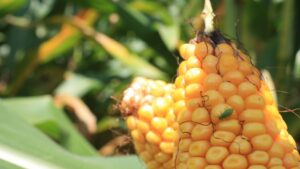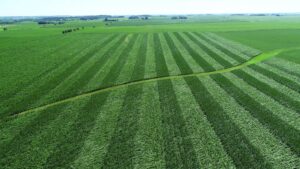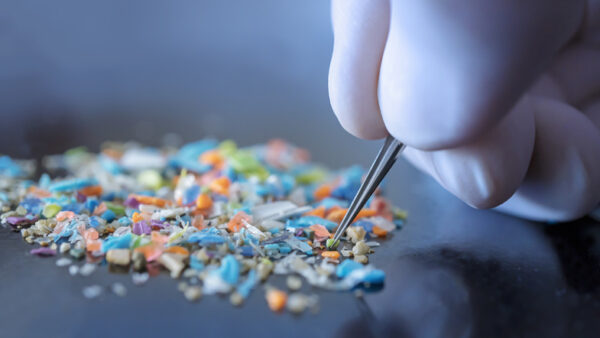Seed innovations are a crucial part of feeding a hungry planet, but do most people understand what this commitment means? I’m not sure even most people who have been in the seed industry for many years understand the commitment, the time, the resources, the dedication it takes to meet growers’ and consumers’ unmet needs. We’ll use corn and soybeans for this article, next month will be tomatoes and lettuce.
Let’s always start with customers. What do growers expect of their seed companies? My experience with growers for earning their business is a commitment to seed varieties/hybrids that produce high yields that keep their operating costs/unit down and their profitability potential high. Yes there are some quality contracts focused on a particular premium driven characteristic, but let’s skip that for now.
Yield, according to plant breeders is a function of genetic potential, environment and management… the old yield = f(genetic potential x environment x management) equation. A grower’s own on-farm yield is generally challenged with many types of stresses related to this equation… soil type, fertility, moisture availability during season, planting dates, plant populations, pests, diseases, weeds, weather events, timing, heat units, seed treatments, etc. Growers look for a seed innovation solution that helps reduce the “nickel and dime” reduction in yield potential that happen on the farm.
Plant breeders focus on continually increasing the yield potential of their elite lines through old and new plant breeding techniques. Both have a place, but today’s new plant breeding techniques offer faster and more precise understanding how to move “two steps forward without taking a step backward”! In-depth understanding on what part of the genome is responsible for yield, disease tolerance, fruit setting, height, stress mitigation is a very complicated situation, but it’s amazing at what today’s plant breeders can and are doing! And they’re doing it knowing that their new lines won’t hit commercial fields for 7-8 years. They have to have their finger on the pulse of growers’ and consumers’ unmet needs as they decipher their work. Short statue corn, nutrient/water stress, high oil content, longer ear length with more kernels, more beans/pod, etc., and now specific quality traits for healthier living. Those are the basics.
For some 26 years we’ve seen a dramatic change in U.S. row crop production with the introduction of GMO traits which in essence have reduced the stress from weed/pest competition. This introduction of traits also necessitated more comprehensive global regulatory packages to ensure unrestricted global trade as well as mitigate insect/weed resistance management.
In the U.S. we are lucky to have a vast breadbasket across a wide swath of land north-south, east to west suited for corn and soybean cultivation by approximately 320K row crop growers. Each of these growers expect varieties/hybrids that meet their maturity group, soil adaptation, disease tolerance/resistance, pest/weed management, seed size needs as well as anticipate future unmet needs (i.e. climate stress, efficient photosynthesis, etc.).
Seed companies must continually innovate in order to “earn” a grower’s seed business and must re-invest some 15% of revenues (turnover) back into new seed innovations. View the charts below to get an understanding how a seed company must provide a complete portfolio to satisfy as large a swath of growers’ needs as possible. Don’t forget to factor in the many different crops seed companies may be committed to.
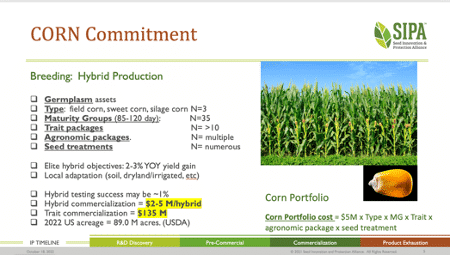
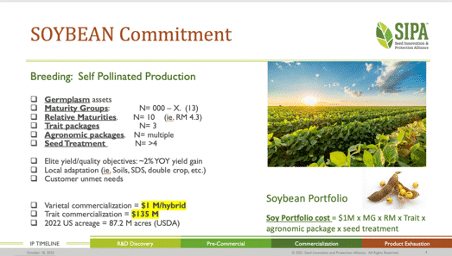
Seed innovations require a significant commitment of talented people, resources, and a germplasm pool over a long period of time to meet growers’ unmet needs.
Do you have that commitment?



